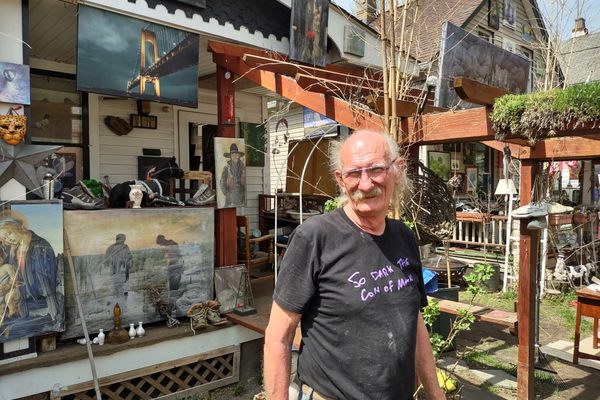Campanópolis
An Argentinian businessman facing terminal cancer built this whimsical medieval village using salvaged materials.
Antonio Campana was a self-made supermarket millionaire. When he was diagnosed with terminal throat cancer, he decided to sell everything and dedicate the rest of his life to building a dream.
The land he purchased in 1976 for his vision sits at the confluence of two streams and abuts an ecological preserve. However, the pastoral location was quickly spoiled when a state agency expropriated the property for use as a landfill. By the time Campana’s lengthy legal battle to regain possession of the land was finally successful, it was already buried under several years’ worth of garbage. While the land was no longer fit for cattle grazing (which had originally been part of his plan), he was undeterred in his architectural ambitions.
After leveling the land and carting off 2 million cubic meters of garbage, construction finally began in 1980 on what would become the enchanting medieval village of Campanópolis. It is a complete small village, built in an eclectic style that has invited comparisons to a Tim Burton film set. Buildings are mostly made with items recovered from the demolition of other buildings and sold as salvage. Throughout the construction process, Campana trawled countless auctions buying up doors, fences, gates, and columns, as well as decorative details like an antique barber chair, an old elevator, and one hundred typewriters. One important part of the village is made from materials gathered from discontinued railroad lines.
All of this work was designed and directed by a man who had no background in architecture and drew up plans on the fly as the project evolved. In addition to the village, Campana also planted more than 100,000 trees and other plants. Overall, the village takes up about 50 acres (20 hectares) of the 495-acre (200-hectare) property; the surreal scene features fountains, bridges, an artificial lake with docks, a town church, a Dutch windmill, cobblestone streets, a “Museum of Wood” and a “House of Slag,” as well as countless other buildings, towers, passages, and secret nooks to explore.
Told in 1976 that he had only five years to live, Campana survived for another 24 years, during which time he worked tirelessly on Campanópolis. When he died, further development stopped; his sons now maintain the place, but the additional plans dreamed up by the grocery-magnate-turned-medieval-city-planner remain unfinished.
Know Before You Go
Open only on Wednesdays and Fridays in the afternoon and Saturdays in the morning, visits must be reserved and paid for in advance via the official website (there is not a ticket office). The cost is about 7USD each one. The site is about 20 miles southwest of Buenos Aires, 2 miles south from González Catán station and 2km southwest from the km29 crossroad (Independencia station). If you want to come by public transport, you may take the Belgrano Sur train to González Catán station (NOT M. C. Belgrano ramal), and take the "truchito" bus in Posamay and Simon Perez. This bus can only be paid with AR$ bills (not Sube card) and has stop just in front of Campanopolis (Zelada and Bariloche) There is a ramal of 622 bus from Laferrere station too, it has a stop in Zelada and Bariloche. Or you can take the 88 bus in Once station to the Km31 and thake the truchito there. A taxi from Buenos Aires could be pocket-rape and less than 10% of taxis would come to Catán. Eventough Campanopolis is surrounded by shantytowns, I live near this place and I wasn't robbed yet. There is free parking inside.
By km31 is Padre Mario Pantaleo's Mausoleum and it could be a touristic place too, for seizing the day in González Catán. (Plus you might meet my b&g macaw walking around Catán square at sunset).

























Follow us on Twitter to get the latest on the world's hidden wonders.
Like us on Facebook to get the latest on the world's hidden wonders.
Follow us on Twitter Like us on Facebook